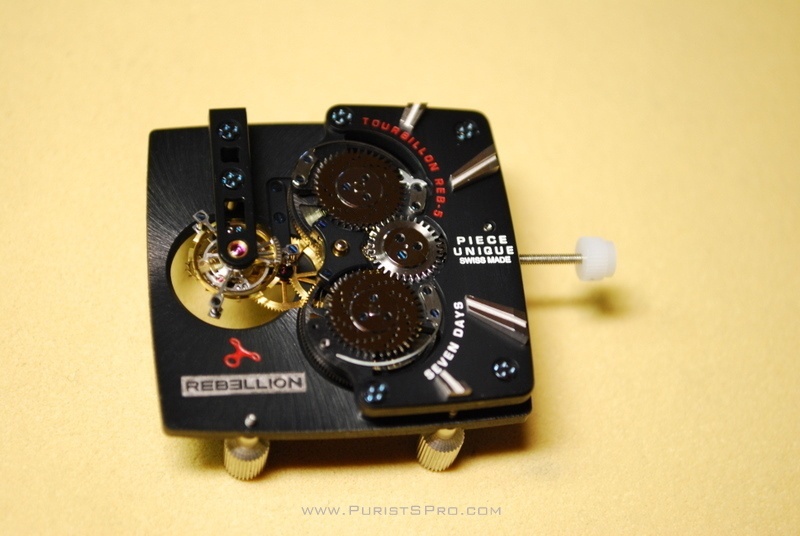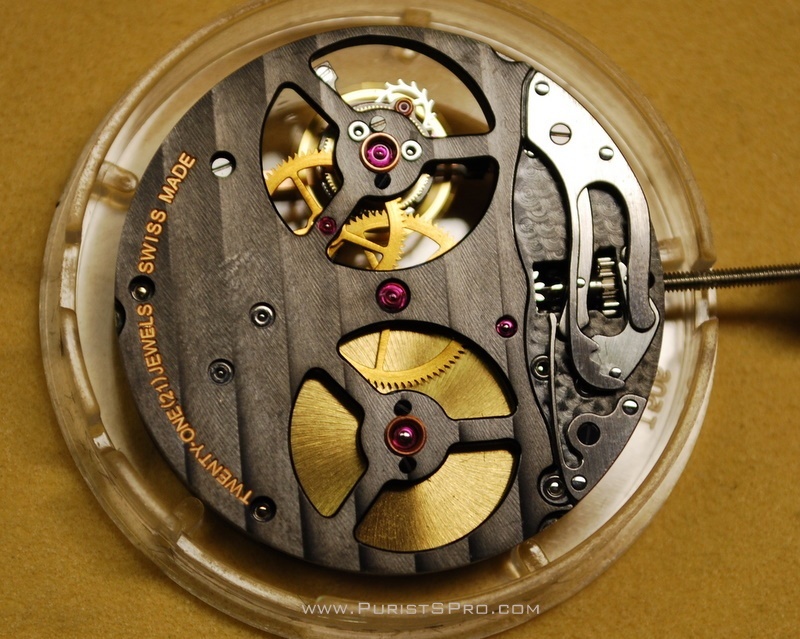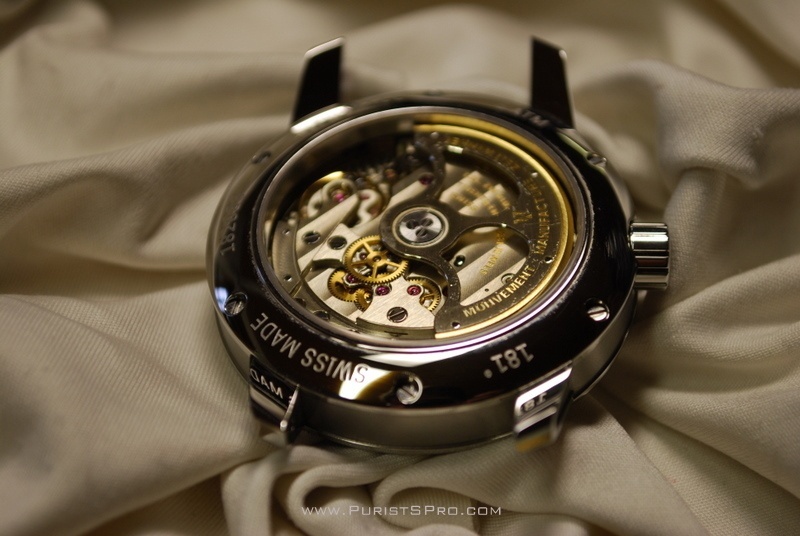
DonCorson
[AHCI]
3358

Movement Maker
Movement Makers - Les Artisans Horlogers, LeLocle
Let's
make a little visit to Les Artisans Horlogers in Le Locle to see what
they are up to. You certainly have seen the work of Les Artisans
Horlogers even if you don't know it as one of the leading developers and
manufacturers of custom movements. Just to cite 2 big customers, Max
Busser & Friends (MB&F) and Revolution.
Les Artisans
Horlogers was founded by Laurent Besse and Manuel Spöde 7 years ago and
is located in an over 100 year old house in Le Locle.

As movement development is
a big portion of their work Les Artisans Horlogers devotes fully one
third of their employees to development.
The movement pictured below you certainly know, it has been around the internet long enough before the watch was to be seen.

This tourbillon movement for Revolution we will see finished later in the atelier.

An important part of the
work of designing a movement is making sure that it can be made reliable
and easy to assemble with little or no fine advustment needed for each
piece. To this end Laurent's watchmakers are intimately involved in the
movement design along with the design engineers. Their practical
experience flows into the initial design and their comments when making
the prototypes guides the fine tuning for the production pieces.

While computer aided
design is a tremendous help in visualising and finalising a design, it
is still often pencil and paper that make the ideal way to capture ideas
and find solutions to problems.

Once the movement has been
completely designed with the 3 dimensional CAD production drawings need
to be made. While the component manufacturers will take a 3D model to
program their machines dimensioned drawings are needed so that people
can check the parts.




Drawings are also made to guide the watchmakers during the assembly, here for the insertion of guide pins in the plate.

Les Artisans Horlogers
concentrates on watchmaking and as such does not do the production of
the individual parts themselves. They have a large network of
specialist companies in the region making the parts for them. The
logistics department at Les Artisans Horlogers orders the parts and does
quality control on the incoming parts. After passing quality control
they are entered into stock. Here we see Laurent Besse in the stock
room.

Logistics also makes the
movement kits that include all the parts for a movement ready to be
assembled by the watchmakers. For some customers this movement kit is
then delivered, the customer doing the assembly themselves. For others
the movement is assembled. Les Artisans Horlogers is completely
customer oriented, their production going up to store-ready watches in
the presentation case and shipping material if required. Here we see
some movement kits.



Before leaving the
logistics area we take a look at the time information system enabling
them to keep synchronised with their widely separated suppliers in Le
Locle (local time), La Chaux-de-Fonds (+20.55 seconds) and Neuchâtel
(+43.71 seconds).

Now we move upstairs into
the realm of the watchmakers. These are the people who assemble the
movement kits and case up the watches.







With their development of
several new movements a year they make many prototype and unique
pieces. For these watches the watchmakers are well equipped with many
tools we don't see that often such as a Rollomat and a Jaquet tool for
burnishing pivots. These tools are used for single pieces doing
operations that would be a part of the parts production process for
larger quantities.

Now we get a chance to see the tourbillon for Revolution that we saw earlier on the computer screen for real.



This is a unique piece
that will be delivered in a black diamond paved case. Note that this
case is set without any space between the individual stones.


Let's now take a look at some of the other pieces to be seen in the shop on the day of my visit.
Ellicot Majesty, note the peripheral rotor of the automatic that does not cover up the movement as a normal central rotor does.


Universal Genève micro-rotor.

Corum tourbillon, hand wind.


Zeitwinkel central rotor automatic.

The Zeitwinkel movement in a prototype case.


This last picture gives us
a hint at some of the exciting developments that will be coming. This
movement plate is made of white ceramic. This piece is a test to see
how well ceramic can be machined and the tolerances that can be
obtained. I am wondering what brand may be behind this development.

I would like to thank Laurent
and his team for their kind reception in their shop. I am looking
forward to see what their creativity and knowledge will produce in new
surprises in the future.
Don